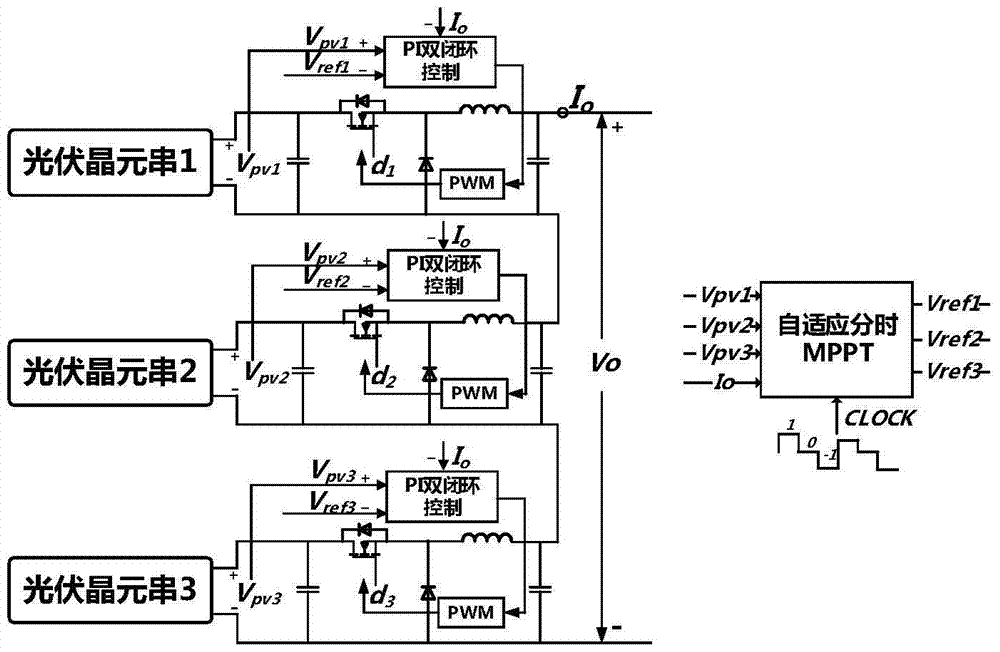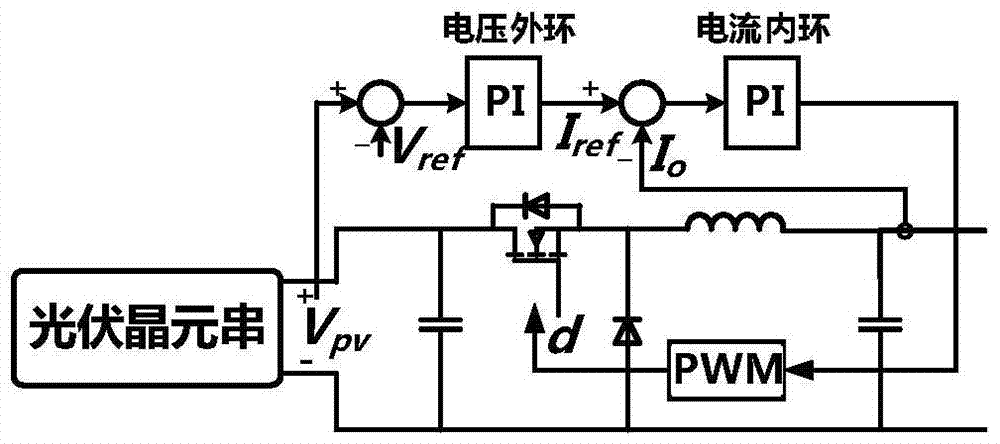dmppt photovoltaic power generation module based on time-sharing adaptive mct algorithm
A photovoltaic power generation module and self-adaptive technology, applied in the field of solar photovoltaic power generation, can solve problems such as difficulty in positioning and impact on photovoltaic system performance, and achieve the effect of making up for power loss
- Summary
- Abstract
- Description
- Claims
- Application Information
AI Technical Summary
Problems solved by technology
Method used
Image
Examples
Embodiment Construction
[0021] (1) System structure and signal acquisition
[0022] A kind of DMPPT photovoltaic power generation module of the present invention such as figure 1 shown. A photovoltaic panel is composed of three photovoltaic wafer strings, each photovoltaic wafer string is connected to a Buck converter, the output terminals of the three Buck converters are connected in series, and controlled by an MPPT control chip to realize the maximum power tracking of the photovoltaic panel. Several such integrated photovoltaic panels are connected in series to a central inverter. The MPPT control chip samples the output voltage V of each photovoltaic wafer string pv1 , V pv2 , V pv3 and the total output current I of the photovoltaic panel o As input, the time-sharing adaptive MCT algorithm calculates and outputs three reference voltage signals V ref1 , V ref2 , V ref3 . Reference voltage signal V ref (V ref1 , V ref2 , V ref3 ) and photovoltaic cell string output voltage V pv (V pv...
PUM
 Login to View More
Login to View More Abstract
Description
Claims
Application Information
 Login to View More
Login to View More - R&D
- Intellectual Property
- Life Sciences
- Materials
- Tech Scout
- Unparalleled Data Quality
- Higher Quality Content
- 60% Fewer Hallucinations
Browse by: Latest US Patents, China's latest patents, Technical Efficacy Thesaurus, Application Domain, Technology Topic, Popular Technical Reports.
© 2025 PatSnap. All rights reserved.Legal|Privacy policy|Modern Slavery Act Transparency Statement|Sitemap|About US| Contact US: help@patsnap.com



